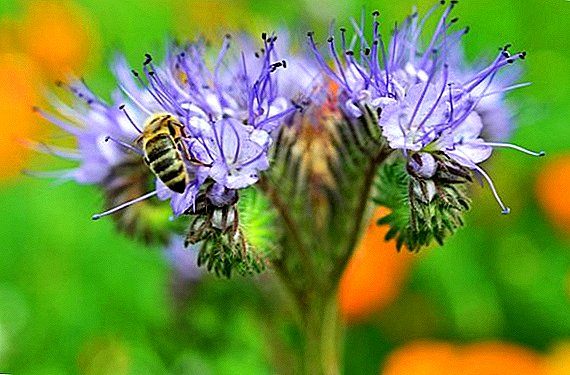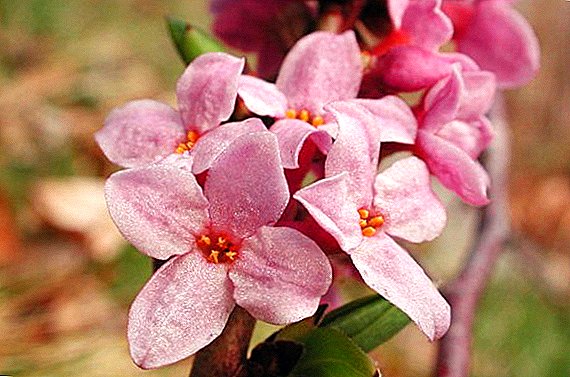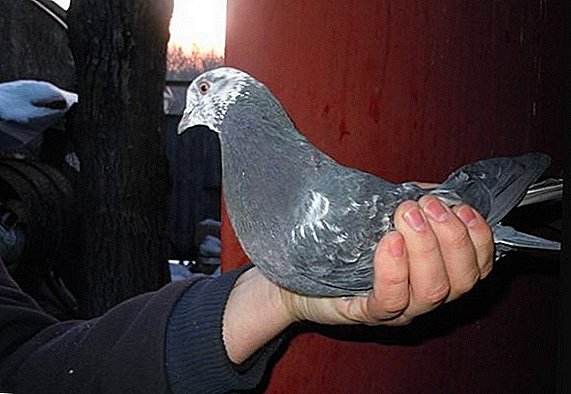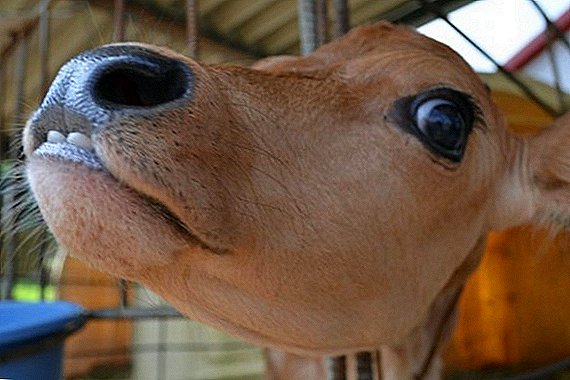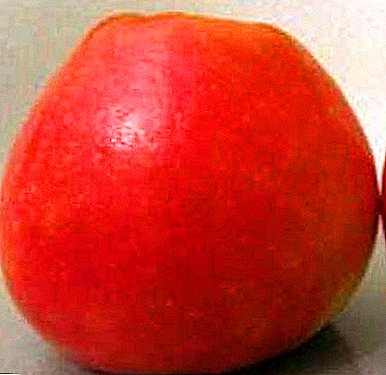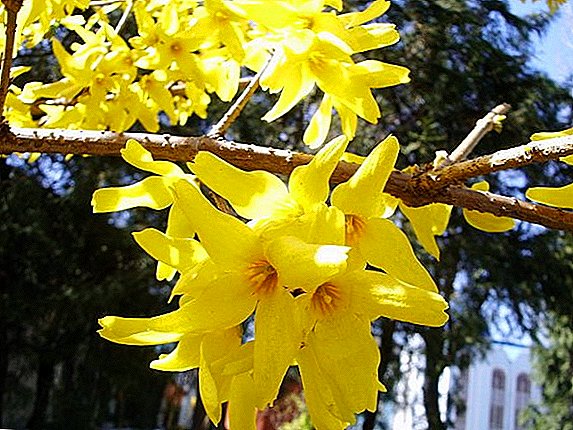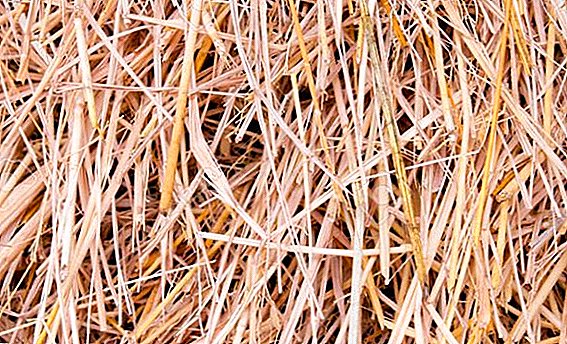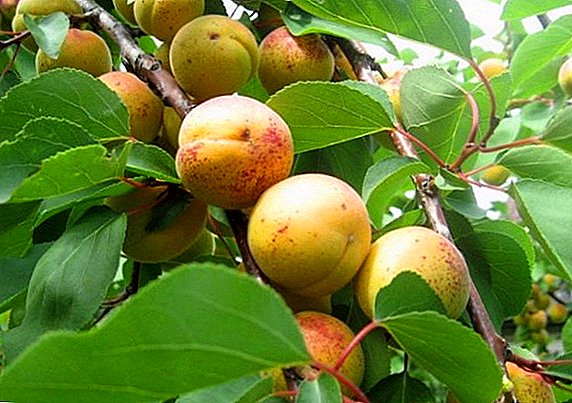 Everyone at least once in his life, especially in childhood, buried stones in the ground. In the course were lemons, oranges, apples. They grew sprouts, which even gave a few leaves. But after a few months, either the wilting or the bush grew in full foliage, which did not bear fruit at all. Do you know how to grow an apricot from a stone at home? Maybe you tried to do it once, but your experiment most likely failed. So this material is for you. If you haven’t even tried it, then this article will also be interesting for you: you will learn what you need to do to grow a healthy and fruitful apricot tree.
Everyone at least once in his life, especially in childhood, buried stones in the ground. In the course were lemons, oranges, apples. They grew sprouts, which even gave a few leaves. But after a few months, either the wilting or the bush grew in full foliage, which did not bear fruit at all. Do you know how to grow an apricot from a stone at home? Maybe you tried to do it once, but your experiment most likely failed. So this material is for you. If you haven’t even tried it, then this article will also be interesting for you: you will learn what you need to do to grow a healthy and fruitful apricot tree.
Selection and preparation of planting material
You need to grow apricot from the bone of the tree that grows in your area. If there is no possibility to get them, then you should order planting material from gardeners who live in the most severe climatic conditions. Apricots growing there are sufficiently hardened and will survive in any climatic conditions and in every corner of the country. The third option is to leave a stone from the fruits bought on the market or in the store. Just do not take hypertrophied foreign varieties, as they will be very problematic to grow.
Important! Choose for reproduction only the best apricots. They should be slightly overripe and with well-separated pulp.
 Before planting apricot seeds, they should be well washed and dried in a dark place. They should not be planted in pots, because they have to undergo a kind of "combat training." Seedlings that will be grown at home, immediately die with the onset of the first frost, as soon as you transplant them into the open ground. But we should not count on the fact that all the seedlings will grow on the bed, as the winter will leave only the strongest and most resistant. But if the apricot is planted from the stone in the early autumn, most of them will be eaten by rodents. This means that the best conditions for planting will be mid-autumn, when the earth has not frozen yet, or mid-spring.
Before planting apricot seeds, they should be well washed and dried in a dark place. They should not be planted in pots, because they have to undergo a kind of "combat training." Seedlings that will be grown at home, immediately die with the onset of the first frost, as soon as you transplant them into the open ground. But we should not count on the fact that all the seedlings will grow on the bed, as the winter will leave only the strongest and most resistant. But if the apricot is planted from the stone in the early autumn, most of them will be eaten by rodents. This means that the best conditions for planting will be mid-autumn, when the earth has not frozen yet, or mid-spring.Before planting apricot seeds in the fall, they need to be filled with water for a day. This method will make it clear which ones are defective and which are not, as low-quality ones will emerge. Pick-up stones need to be planted in trenches six inches deep and with a distance of every ten centimeters. For the result to meet your expectations, the trenches need to be deepened a little more, and a mixture of earth, grass, humus and sand should be placed at the bottom. It is also advisable to fertilize the bones from above with grass and humus. During the winter, apricot from the stone will undergo a natural hardening, and by the spring will give the first tender shoots.
 If you postpone the landing for the spring period, the bones should undergo stratification. They can be placed in a sandbox and refrigerated for the whole winter. You can take dried bones in the middle of March and put them in water for three days, which needs to be changed every day. After material for landing it is necessary to lay in damp sand and to place in the cellar. In April, the bones can be sown in the open soil as soon as the weather conditions allow.
If you postpone the landing for the spring period, the bones should undergo stratification. They can be placed in a sandbox and refrigerated for the whole winter. You can take dried bones in the middle of March and put them in water for three days, which needs to be changed every day. After material for landing it is necessary to lay in damp sand and to place in the cellar. In April, the bones can be sown in the open soil as soon as the weather conditions allow.
Did you know? For the first time apricots are mentioned in the records of 4000 BC. Homeland of this tree is either Armenia or China. After he appeared in Persia and the Mediterranean. To Greece this fruit brought Alexander the Great. From here he began to spread throughout Europe.
What soils are suitable for apricots?
The best soil suitable for planting apricot seeds is loamy or slightly loamy. Low carbonate is also suitable. The pH value should be between seven and eight. But you can use other soils. The main thing is that they have a light texture, do not contain toxic salts and are very tightly folded.
 The soil must have good ventilation and drainage properties. Apricots tolerate dry periods, but when moistened, the soil grows remarkably and gives rich yields. Plot with apricot sowing should not be located in the lowlands. Since there is accumulated cold air, which can adversely affect the further cultivation of plants.
The soil must have good ventilation and drainage properties. Apricots tolerate dry periods, but when moistened, the soil grows remarkably and gives rich yields. Plot with apricot sowing should not be located in the lowlands. Since there is accumulated cold air, which can adversely affect the further cultivation of plants.
Preparatory work should be carried out in advance. The bottom layer of the earth should be drainage from rubble, from above it should be sprinkled with humus and mineral fertilizers, ash and ammonium nitrate. To prevent root burns, you need to prepare a lime mortar in advance. They are lubricated by the roots in such a way that there is no contact with fertilizers. Apricot sprouts need to be planted on a small elevation, the roots must be powdered to the very neck of the plant. Around this mound make a small ditch, which you need to fill with two buckets of water. Some plant apricots horizontally so that they receive heat from the ground. To do this, fix the branches at an angle of at least 45 degrees.
Planting bone in late autumn (natural stratification)
 If the bones are not planned to be planted in open ground immediately, then they are retained until autumn. They should be planted in late autumn with the onset of the first frosts. Planting apricot bone in the fall should be carried out after natural stratification. All bones are placed in the water and leave only those that lay on the bottom. Next, prepare a trench to the depth of the spade bayonet. Spread humus, chernozem, grass and sand on the bottom. When it remains to the surface of five centimeters, you can lay apricot stones. Cover them with grass and humus from above, but you can not do this, because you need to harden and identify the most winter-hardy plants. By May, already grown seedlings will be visible. Further young plants need to be carefully looked after, protecting them from pests until autumn, until the transplant to a permanent place.
If the bones are not planned to be planted in open ground immediately, then they are retained until autumn. They should be planted in late autumn with the onset of the first frosts. Planting apricot bone in the fall should be carried out after natural stratification. All bones are placed in the water and leave only those that lay on the bottom. Next, prepare a trench to the depth of the spade bayonet. Spread humus, chernozem, grass and sand on the bottom. When it remains to the surface of five centimeters, you can lay apricot stones. Cover them with grass and humus from above, but you can not do this, because you need to harden and identify the most winter-hardy plants. By May, already grown seedlings will be visible. Further young plants need to be carefully looked after, protecting them from pests until autumn, until the transplant to a permanent place.
Did you know? Today, there are about twenty kinds of apricots. The rarest is black. It appeared as a result of hybridization of apricot and cherry plum.
Planting bone in the spring (artificial stratification)
You can start growing apricots in the middle of spring - in April. In order for the seeds to be well prepared for spring sowing, at the end of January they should be put in boxes or drainage tanks with wet sand. And it is better to prikopat in the garden in the ground, which froze, until the spring. In this case, the stratification of apricot kernels will be the most natural. If you do not really want to mess around in the garden in the winter, you can put these boxes in the basement or in the refrigerator, where the temperature is constantly kept no more than two degrees Celsius. In this form, they must be stored until spring and periodically check the humidity of the sand. In late April, the bones are transplanted into open soil in the same way as in the autumn stratification.
Care for sprouted shoots
 As you already know how to sprout apricot seeds, now the first shoots will need to be protected from various encroachments by birds, pests and rodents. Tender shoots are their favorite delicacy, because they have so many nutrients and an abundance of vitamins. There is a great way to protect sprouts by covering them with transparent two-liter plastic bottles. For this, someone cuts only the bottom of the bottle in a circle, and someone else and the neck. To understand which way is better, you just need to experiment. Half of the shelters do the first way, the rest - the second. Then take care of apricots in the same way as for seedlings purchased in garden centers or nurseries. The main thing is to provide apricots with plenty of sunlight, a complex of mineral and organic fertilizers and good watering.
As you already know how to sprout apricot seeds, now the first shoots will need to be protected from various encroachments by birds, pests and rodents. Tender shoots are their favorite delicacy, because they have so many nutrients and an abundance of vitamins. There is a great way to protect sprouts by covering them with transparent two-liter plastic bottles. For this, someone cuts only the bottom of the bottle in a circle, and someone else and the neck. To understand which way is better, you just need to experiment. Half of the shelters do the first way, the rest - the second. Then take care of apricots in the same way as for seedlings purchased in garden centers or nurseries. The main thing is to provide apricots with plenty of sunlight, a complex of mineral and organic fertilizers and good watering.
Did you know? Three fresh apricots, eaten by a person per day, contain 30% of the recommended daily intake of beta-carotene. Even at the first landing on the moon, the Apollo astronauts ate dried apricots, as it contains 40% of sugars and a large amount of energy.
Transplanting seedlings to a permanent place
Transplanting apricot is not an easy task because of its characteristics, which must be taken into account if you hope that the tree will take root perfectly in its permanent place. Each of the seedlings must be carefully examined for damage by pests and diseases and select the best ones. A few hours before transplanting, the seedling needs to be watered well, so that the root system is abundantly moistened, as is the ground around it. So you can dig up the roots with a lump of earth, and this will provide good security for them.
 Of course, you can bare the roots, but this is an extra time cost, and it should be done with extreme caution, keeping even the smallest processes of the system. Pristvolny circle, which is equal to the diameter of the crown, ditch, forming around the tree a small trench to a depth of 80 centimeters. Such depth will become reinsurance, because the main roots will remain unharmed. Long shoots will be cut with a spade. Then, with a pitchfork, you need to gently pry the earthen clod with the root system and move it to cellophane or burlap to keep its shape. If the seedling needs to be transported somewhere, then after extraction it should be put on a dense layer of sawdust.
Of course, you can bare the roots, but this is an extra time cost, and it should be done with extreme caution, keeping even the smallest processes of the system. Pristvolny circle, which is equal to the diameter of the crown, ditch, forming around the tree a small trench to a depth of 80 centimeters. Such depth will become reinsurance, because the main roots will remain unharmed. Long shoots will be cut with a spade. Then, with a pitchfork, you need to gently pry the earthen clod with the root system and move it to cellophane or burlap to keep its shape. If the seedling needs to be transported somewhere, then after extraction it should be put on a dense layer of sawdust.
New planting pit for apricot is prepared in advance. For example, they are dug up for spring transplantation in the fall, but for the fall - for a month. The pit should be about two times wider than the crown of the plant. So the roots will get more free space. The depth will depend on the age of the seedling and the extent of its root system.
Important! The place is better to choose on the south side of the garden plot, so that it is as protected from drafts as possible.If the land for apricot is not very comfortable and too heavy, it will need to work. At the bottom of the pit it is necessary to lay a drainage layer of dry twigs and rubble, then pour it with a sod layer mixed with humus. There are options: either lay a large quantity of fertilizer under the apricot, or make the planting hole wider so that the roots get more nutrients from the soil.
 It is useful to add a pound of superphosphate and two hundred grams of ammonium nitrate to the pit. If the earth is more acidic than necessary, one kilogram of lime is added. For clay soils, fertilizer derived from red clay, peat and sand is used in equal proportions. The seedling is placed in the pit strictly perpendicular if it is in an earthen coma. If the root system is open, then the roots are straightened and gently covered with earth. To tamp the ground is not worth it, you just need to fix the tree.
It is useful to add a pound of superphosphate and two hundred grams of ammonium nitrate to the pit. If the earth is more acidic than necessary, one kilogram of lime is added. For clay soils, fertilizer derived from red clay, peat and sand is used in equal proportions. The seedling is placed in the pit strictly perpendicular if it is in an earthen coma. If the root system is open, then the roots are straightened and gently covered with earth. To tamp the ground is not worth it, you just need to fix the tree.
After planting make around the apricot mound of land that will keep water from spreading in the root zone after watering. And it is necessary to moisten the soil very abundantly. In the first season after transplanting a tree to a permanent place, it is necessary to water it intensively, gradually reducing the amount of water. Growth of the root system should slow down before the onset of winter.
Apricot should be abundantly watered after harvesting the fruits, in order to restore the strength of the tree spent on their ripening.


